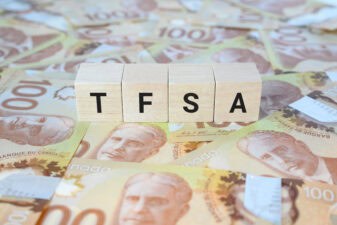Debt may be the most important component of our economy, but many of us don’t fully understand the concept of debt and how it can affect the economy and markets in the most extreme circumstances.
There are a number of misconceptions about debt that should be debunked. Since it’s so important for consumers as well as business and, most importantly, governments, let’s take a look at five facts to keep in the back of your mind, as you choose your next investment.
What it does
Debt, in the simplest terms, gives the user of it leverage. In most cases, debt is a good thing, providing an opportunity that would otherwise have been passed up.
Whenever $1 of debt can be used to create more than $1 in return, it would be considered good debt. This is how many businesses operate, using a combination of investors’ money and debt, to leverage the equity and earn a higher return for shareholders.
Why it’s good
As long as debt is being used to create new money that is in excess of the amount borrowed, then it can be considered good debt. This is because not only is the debt improving the situation of the borrower, but it’s also improving the livelihood of whoever is making the sale to that borrower.
Debt allows us to spend more than we have, which, in an efficient market, will continuously create new money. The strength of an economy has a lot to do with the velocity of money, so when there is liquidity in markets the velocity is a lot higher.
Consumer debt
Consumer debt, though it can help the economy grow by allowing consumers to spend more than they are making, would be considered bad debt to the individual, because it’s not being used to create money.
Of course, there are going to be goods consumers need to buy on credit, such as a house or car, but in general this debt is not as useful.
Although consumption is an important part of GDP, the debt is not being used to create new money, therefore when it’s paid back, it will have to come out of future earnings, which will technically decrease future consumption.
This is unlike a company that is borrowing to create value, which can reasonably expect to be earning more in the future, when it’s time to pay the debt back.
Corporate debt
Corporate debt is always borrowed to be used as good debt, but companies need to make sure they don’t over leverage themselves and aren’t too optimistic when considering taking on debt.
The biggest mistake companies make is taking on too much debt and then having a major problem impact their operations, that leaves them struggling to pay it down.
A responsible company will accumulate debt slowly and make sure it has adequate and stable cash flow to continue to pay it down. It will manage its debt prudently, with pre-set ratios to ensure it stays in a healthy range.
Why debt is important
Investors may wonder why companies take on debt at all if there is a risk that something can happen to the operations that would affect its ability to pay it back.
The reason is because of opportunity costs. If you can potentially make double the return with only half the money, it makes sense to borrow the other half, especially if you can get it for cheap, which has been the case the last decade.
Looking at a company such as Canadian Pacific Railway, it has total assets of roughly $21 billion and total equity of just roughly $7 billion. This means that two-thirds of its assets are funded by debt.
So, when the company makes return on assets each year of roughly 10%, that number is more than tripled to get return on equity, because the company is leveraged more than 3.1 times.
In this case, it seems as though the more debt, the better, but it only works out if the debt is cheap enough and the return you generate exceeds the cost of capital.
It’s also paramount to manage the level of debt, because a decrease in revenue and earnings could be devastating.
 Spring Sale
Spring Sale







